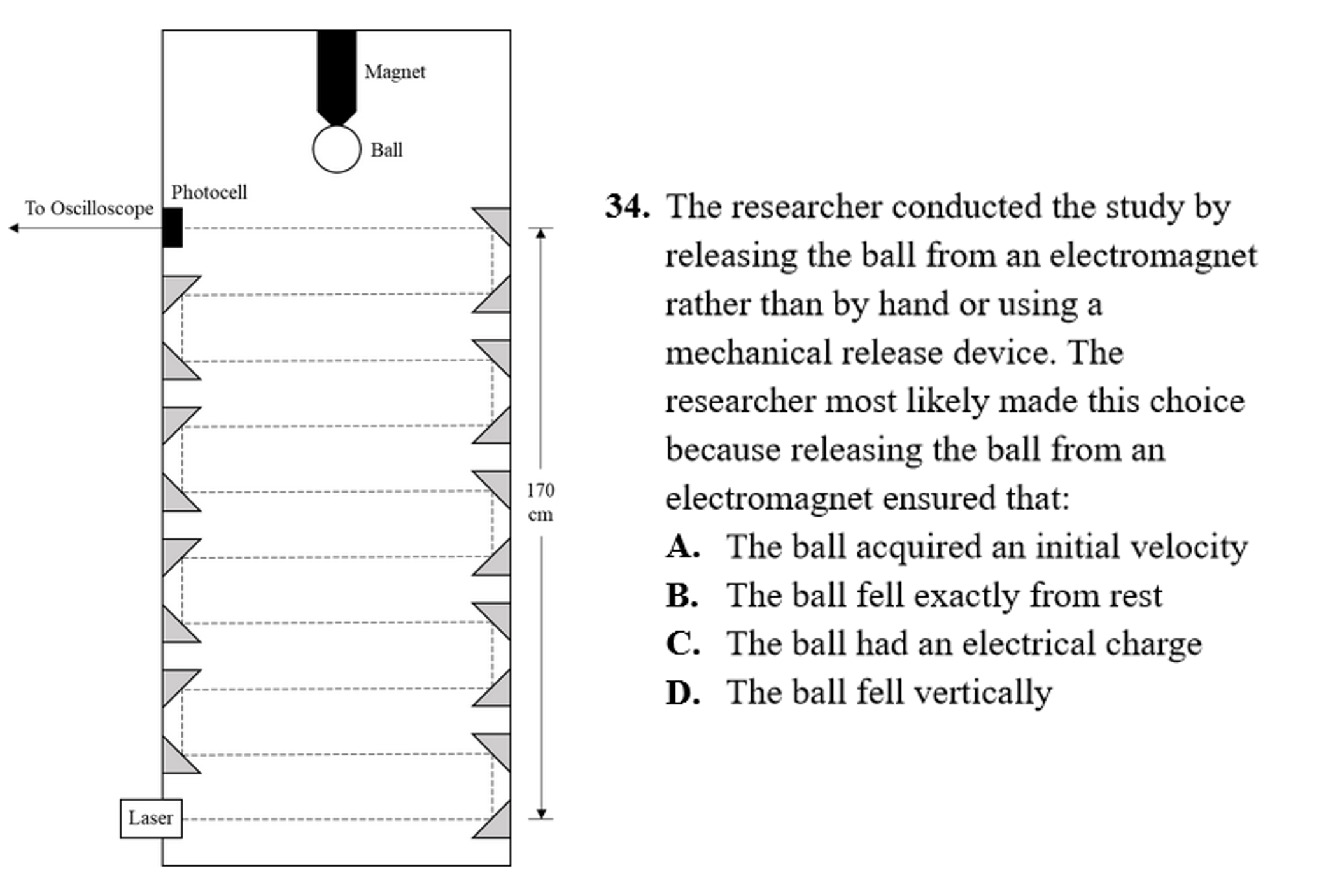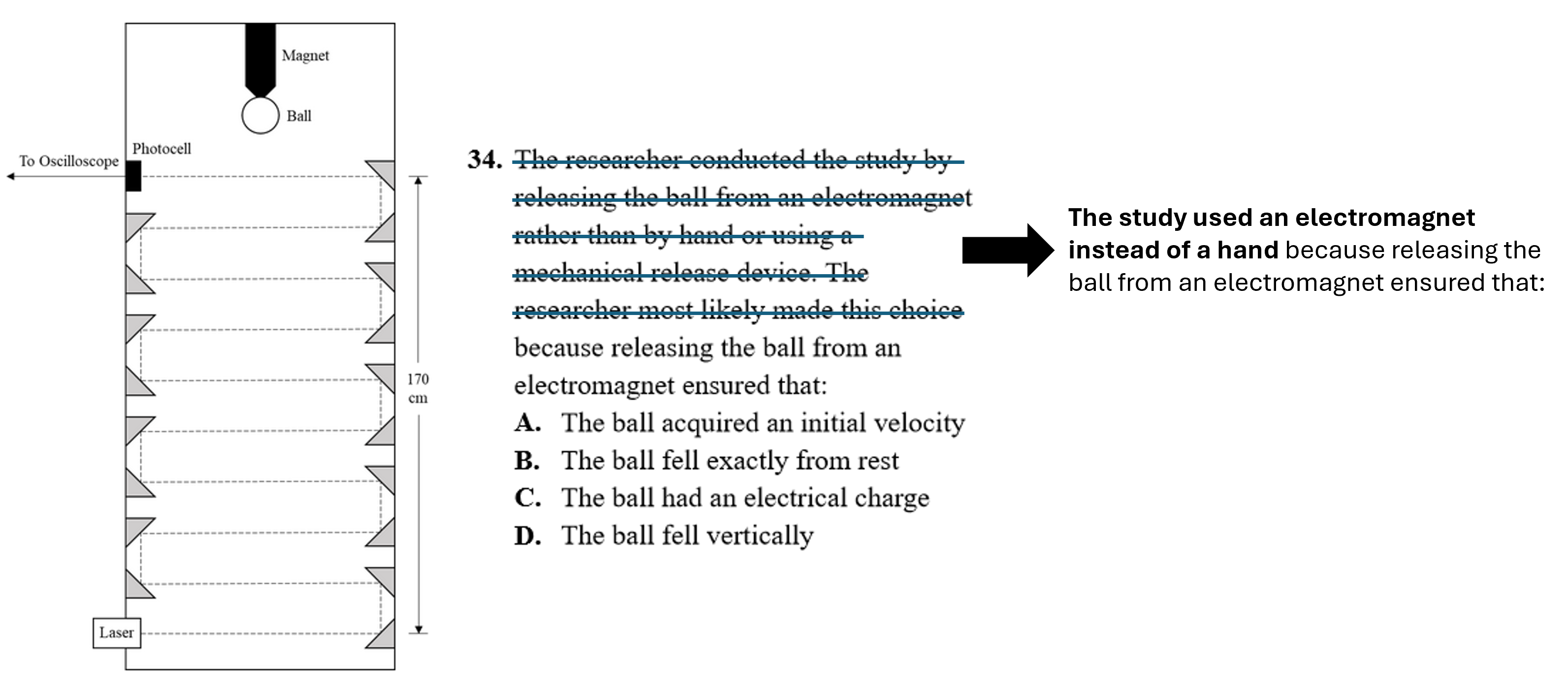This section talks about a few different strategies you can use to improve your time management. You will read about ways to divide up your time and ways to solve problems more quickly. Though all of these strategies have proven very helpful to most students, keep in mind that everybody learns differently. Try your best to practice each one to make sure you know which ones work best for you!
One of the first things you should do is set a goal for how much time you want to be spending on each question. Since there are 40 questions and 35 available minutes on the test, you can evenly distribute your time to be just under a minute for each question. Since each science passage is different, there is no way to predict which passage will be more challenging for you, so it doesn’t make much sense to plan on spending more time on a given passage.
You can also choose to keep track of the time you spend on each passage. There are typically six passages on the science portion of the ACT test, meaning that you can spend about 6 minutes on each passage. This method of keeping track of time is a bit less reliable because a passage can have anywhere from five to seven questions. Also, some tests have seven passages instead of the typical six. In this case, you would be looking to spend 5 minutes on each passage.
Keep in mind that this is only as useful as you make it. If you decide to spread out the amount of time you spend on each question or passage, you must be responsible in keeping track of that for yourself, as no one else will.
One of the most popular tips for the science portion is to start each passage by jumping straight to the questions. This works because each question refers you to a certain location of the passage. After you have solved all the questions of a passage, you should have a decent understanding of all parts of the passage. So, the questions will guide you to understand the passage in a much more meaningful way than if you were to read the passage on your own at the start.
It is often much more helpful to annotate questions rather than passages. This is because you ensure that you understand the question and what you are looking for before you go looking for it. That said, there are a few things you want to make sure you do in your annotations:
You should train yourself to look out for a few key ideas in each question. These ideas include location, variables, and keywords.
The location is the portion of the passage that the question directs you to. This often will look like “according to Figure 2…” and will be embedded somewhere within the question. Look for this detail so that you do not end up reading any more of the passage than necessary!
Variables are the information that you are referring to. Oftentimes, you work with both independent and dependent variables. Independent variables are the variables that the scientist chooses to change (-axis), and the dependent variables are the ones that change as a result (-axis). Especially look out for any numbers given to you! Also, if there is a graph in the passage, you should look out for the variables that make up the axes within the questions themselves.
Keywords relate to words that seem important to the passage. For a chemistry passage, keywords might be different chemicals or elements. For an astronomy passage, keywords might be planets or stars. Be able to think about which words might be most important based on the passage.
While you read through a question, one of the best ways to simplify and understand what you are reading is to write down the key information that you find, as detailed above. This means that you write down the location, variables, and keywords next to the question so that you can refer to your simplified notes rather than the entire question, which may be confusing. This is especially effective when the questions are longer (4+ lines of text).
The purpose of this is to make sure that you can reread the idea of the question and figure out exactly what it wants you to find without having to reread the whole question. Since oftentimes the questions may be more confusing than the answer itself, this will help you stay on the right track to solve the questions that you should be getting right!
Double check at the end of the question for all-caps or italicized words like “NOT” to be sure you are answering the question correctly. Students miss these types of questions very often just because of one word!
Here is a problem that seems difficult because of how long the question is:

The first sentence is very long and is nearly repeated in the second sentence. So, let’s cut it down and write it next to the problem:

Reading the question inside this problem, we need to infer why an electromagnet was used to drop the ball instead of a researcher dropping it by hand. What difference is there between using a secured electromagnet and using someone’s hand?
Answer: is B. The ball fell exactly from rest.